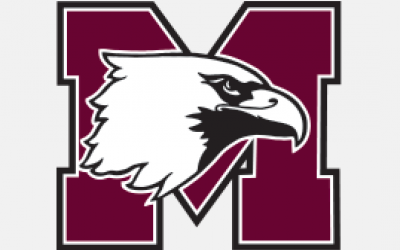ROTATOR CUFF STRAIN/TEAR
The rotator cuff is made up of four muscles and tendons that surround the shoulder joint.
September 26, 2018
OVERVIEW
What Is a Rotator Cuff Injury?
The rotator cuff is made up of four muscles and tendons that surround the shoulder joint. Whether from a direct blow or from repetitive motion over time, injuries to the rotator cuff cause the tendons to tear and become damaged.
Causes of a rotator cuff tear
A rotator cuff injury may be caused by:
- A direct blow to the shoulder
- Repetitive overhead motion of the arm, as in swimming, volleyball, or tennis
- Chronic degenerative wear and tear on the tendons
- Falling on an outstretched arm
Rotator cuff tear risk factors
Athletes in sports that use a lot of repetitive overhead arm motion are at a higher risk of getting a rotator cuff injury. People over age 40, people who do a lot of heavy lifting, or people with weakened shoulder muscles from inactivity are also at higher risk.
Rotator cuff tear prevention
To help prevent tearing the rotator cuff, avoid very heavy lifting and try to give your arm and shoulder a break from repetitive motions. Exercise regularly to keep the muscles around your shoulder joint strong.
SYMPTOMS
Symptoms of a rotator cuff tear
When a rotator cuff injury happens immediately, there will be intense pain. Tears that develop over time will have symptoms progress more slowly.
Rotator cuff tear symptoms and signs may include:
- Recurring pain, especially with overhead motion
- Shoulder muscle weakness when lifting the arm
- Popping or clicking sounds when you move your shoulder
- Limited range of motion in your shoulder
Rotator cuff tear diagnosis
To diagnose a rotator cuff tear, a physician will take a medical history and perform a physical exam. You doctor will look at your range of motion, strength and discuss the amount of pain you are having.
Tests you may need include:
- X-ray to examine your shoulder joint
- MRI to see the inside of your shoulder
- Ultrasound to look for inflammation and tears
Your diagnosis will be based on how badly the rotator cuff is torn. You may have a partial or total tear. A partial tear means the rotator muscles are not torn completely. With a total tear, the tendons are completely ruptured.
TREATMENT
Rotator Cuff Treatment
To avoid long-term pain and limited use of your shoulder, you should treat any rotator cuff injury right away. Even a minor tear can worsen over time if not given the chance to properly heal.
The goals of treatment are to:
- Prevent further tearing
- Manage pain
- Stabilize the shoulder joint
- Allow you to return to activity
Recovery time can take anywhere from several weeks to several months, and varies depending on the severity of the tear. In cases where surgery is needed, your physician will discuss your recovery time and plan with you in detail.
Non-surgical rotator cuff injury treatment
For minor tears, you need to give your shoulder a break and let the muscles heal on their own. Your physician may recommend:
- Immobilizing the shoulder
- Applying ice packs for 15 minutes a few times a day
After your symptoms have subsided, your physician may recommend physiotherapy to strengthen your rotator cuff and the surrounding muscles.
Rotator cuff tear surgery
For a major tear, or if your symptoms don't get better after nonsurgical treatment, your physician may recommend surgery. You and your surgeon will discuss the best way to treat your specific injury.
To properly recover from surgery, you may need to wear a sling for about four to six weeks afterward to limit motion in your shoulder. That is followed by physiotherapy to regain strength and range of motion.
The sooner you get treatment, the better your chances of stopping the tears from worsening and safely returning to activity.
Content supplemented by UPMC Sports Medicine
